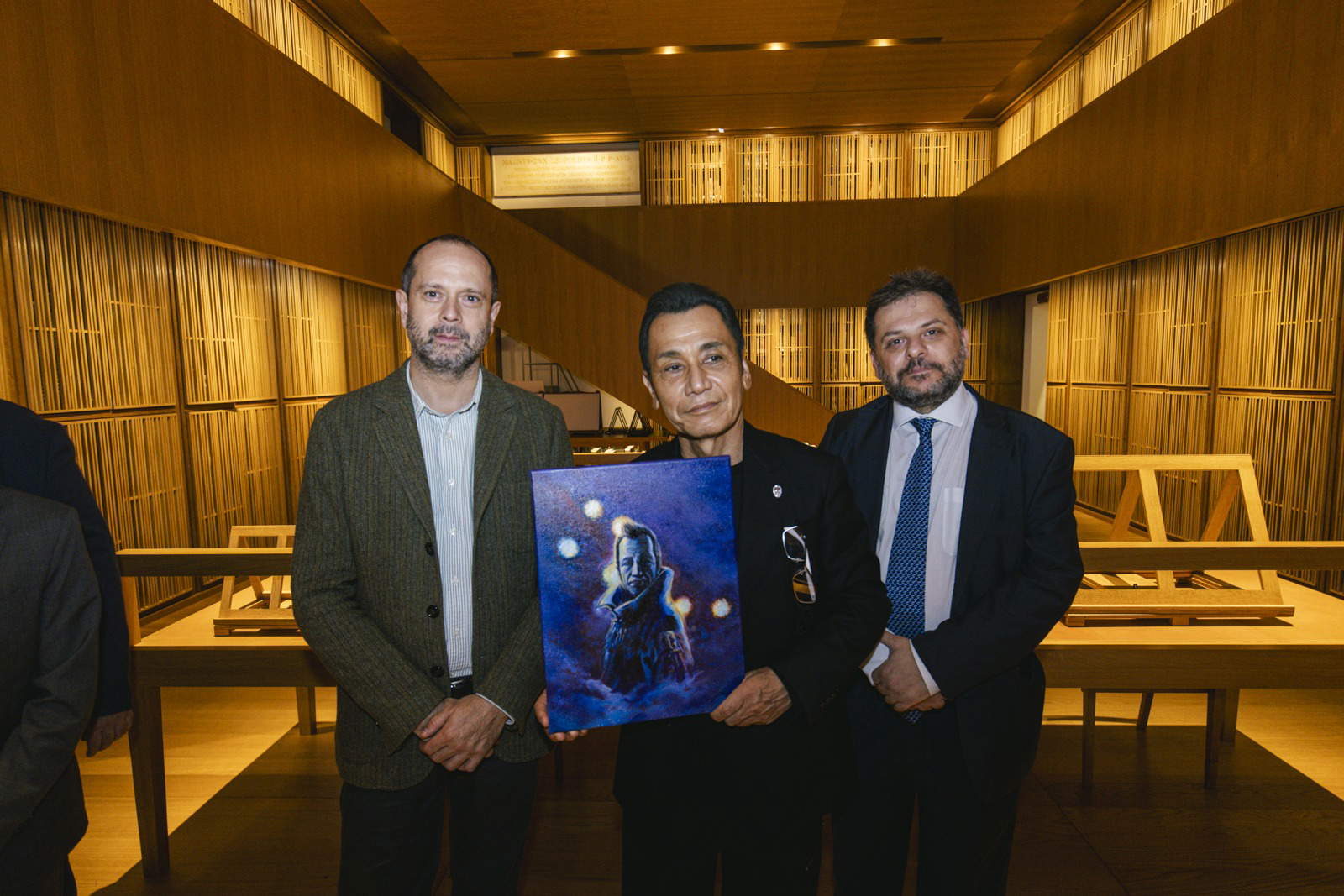Florence welcomes a new and unexpected star to its artistic pantheon. Tetsuo Hara, celebrated Japanese mangaka and author of Ken the Warrior(Hokuto no Ken), has officially joined the Uffizi Galleries’ collection of self-portraits, the largest in the world. With the donation of his own self-portrait, which took place this afternoon during a visit to the Gallery, Hara becomes the first Japanese comic book artist -- and the first mangaka ever -- to be welcomed into this prestigious collection, which spans centuries of art history and includes works by masters from Raphael to Chagall, Guttuso to Marina Abramović.
The meeting took place at the Uffizi Drawings and Prints Cabinet, where the master was received by director Simone Verde, who personally welcomed the work, and by Emanuele Merlino, head of the technical secretariat of the Ministry of Culture, representing Minister Alessandro Giuli. The latter, unable to attend in person, sent Hara a symbolic gift: a reproduction of the famous statue of the Resting Boxer, a masterpiece of ancient sculpture preserved at the Museo Nazionale Romano, a tribute to the theme of the body and strength that has always run through Ken the warrior’s imagination.

The visit marks an important moment for the Gallery and for cultural relations between Italy and Japan. For the first time, in fact, a manga author enters a museum that represents the cradle of the Renaissance, sanctioning an official recognition of Japanese comics as an art form in its own right. Hara’s entry into the collection of self-portraits is part of the active collaboration between the Uffizi Galleries, the Ministry of Culture (MiC) and Lucca Comics & Games, Europe’s most important festival dedicated to comics, gaming and pop culture, which for years has been dialoguing with Italian museum institutions to enhance the language of comics and illustration.
Hara arrived in Florence accompanied by a delegation from Lucca Comics & Games, where he is the guest of honor of the 2025 edition with the exhibition Come un fulmine dal cielo, a large exhibition dedicated to the original plates of Ken the warrior. The Uffizi contributed to the Lucca exhibition with the loan of three 16th-century drawings by Baccio Bandinelli, once again emphasizing the dialogue between classical art and contemporary visual culture.
During his visit, which lasted over an hour, Hara explored the museum rooms with great curiosity and attention. He admired Michelangelo’s Tondo Doni and the Hall of Michelangelo and Raphael, but was particularly impressed by Baccio Bandinelli’s Laocoon, a sculpture he called a source of inspiration for his work. The master wanted to be photographed in front of the monumental work, declaring that that very figure influenced the creation of one of the central panels of his Lucca exhibition, entitled The Savior in the Arena.
The link between the cartoonist and the classical world is not accidental. In his works, Tetsuo Hara has often depicted sculpted bodies and moral tensions that recall the Western heroic tradition. Indeed, his art mixes the plastic strength of ancient statues with the drama of Japanese narrative, blending formal discipline and emotional intensity. The entry of his self-portrait in the Uffizi testifies to this ideal continuity between classicism and contemporary folk art.
 |
| Tetsuo Hara, father of Kenshiro, enters the Uffizi collection with his self-portrait |
Warning: the translation into English of the original Italian article was created using automatic tools. We undertake to review all articles, but we do not guarantee the total absence of inaccuracies in the translation due to the program. You can find the original by clicking on the ITA button. If you find any mistake,please contact us.